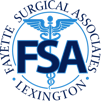Spider Veins Q & A
 Spider veins are similar to varicose veins but smaller. These veins usually appear as red, thread-like lines that resemble spider webs.
Spider veins are similar to varicose veins but smaller. These veins usually appear as red, thread-like lines that resemble spider webs.
Though spider veins are visible beneath the skin, they don’t cause the skin to bulge out the way varicose veins do. The most common places for spider veins to develop are on the legs and face.
Spider veins can happen to anyone, but they’re most common among women. As many as 50% of women get spider veins at some point in their life. Certain factors may increase your risk of spider veins, such as:
- Family history of spider veins
- Advancing age
- Hormonal changes
- Pregnancy
- Obesity
People who spend a lot of time sitting or standing on a daily basis may also be more susceptible to developing spider veins.
Spider veins result from weakness or insufficiency in the valves that control the direction of blood flow in your veins.
Healthy veins contain one-way valves that push oxygen-poor blood back to your heart. When these valves weaken, blood may flow backward or pool inside your vein. The accumulated blood puts extra pressure on the walls of your vein, causing it to become red and swollen.
Through the surface of your skin, a small vein that’s become swollen with pooled blood appears as a spider vein.
Vein Care offers the most advanced treatments for spider veins at our Regency Road location. After thoroughly reviewing your medical history and performing a physical exam, they recommend the best vein treatment for your spider veins.
Common treatments for spider veins include:
- Sclerotherapy
- Laser treatments
- Wearing compression stockings
- Exercising and elevating your legs
To learn more about spider vein treatment, call (office number), or book an appointment online today.

